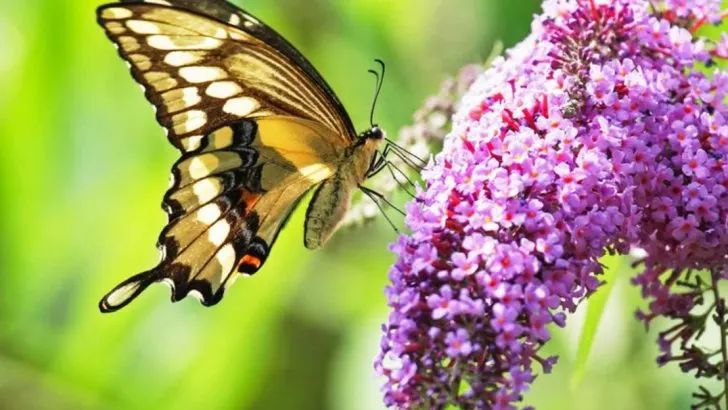Transform your garden into a bird paradise with plants that provide food, shelter, and nesting spots. By choosing the right flowers, shrubs, and trees, you can attract a variety of colorful birds while enhancing the beauty of your outdoor space.
Here are 30 incredible plants that will bring nature to your doorstep!
Butterfly Bush
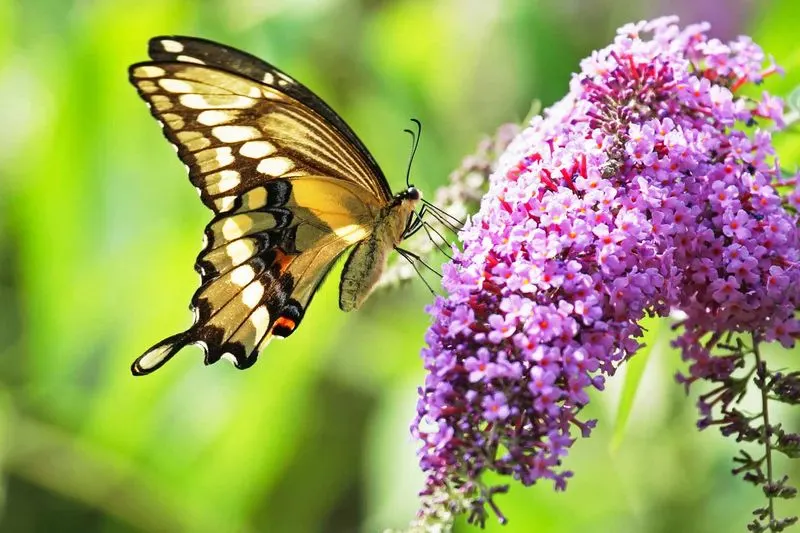
With its long, graceful clusters of flowers, the Butterfly Bush is a magnet for birds and butterflies alike. The rich nectar within these blooms is irresistible to hummingbirds, creating dynamic movement in your garden. Available in hues of purple, pink, and white, this plant suits any color scheme.
Beyond its beauty, the Butterfly Bush is hardy and low-maintenance. It thrives in well-drained soil and full sunlight. Pruning in early spring encourages more blooms, making it a favorite for attracting winged visitors. A perfect blend of aesthetic and ecological benefits awaits.
Cardinal Flower
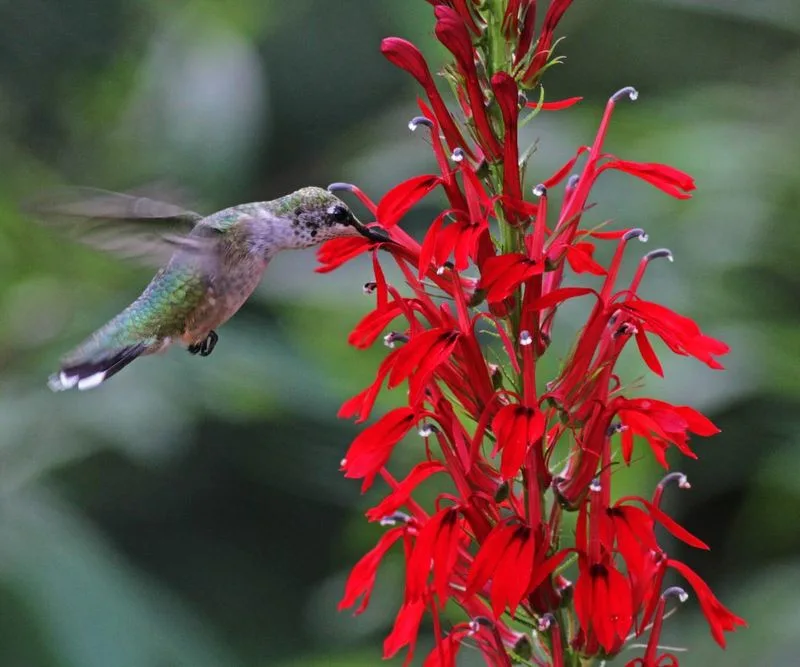
The striking red spikes of the Cardinal Flower are not only visually captivating but also a favorite among hummingbirds. Their tubular flowers are specifically adapted for hummingbirds’ long beaks, ensuring a reliable source of nectar.
Best planted in moist, rich soil, Cardinal Flowers thrive in both full sun and partial shade. These late-summer bloomers bring vibrant color to your garden when many other plants have faded. They offer more than just beauty, giving your garden life and song with visiting birds.
Elderberry
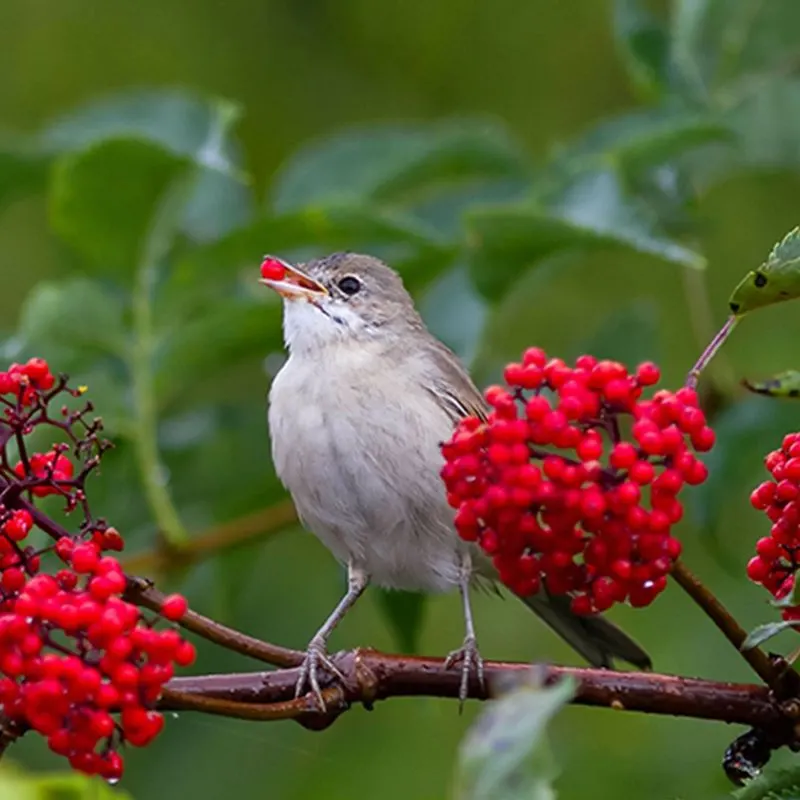
Elderberry bushes serve a dual role, providing a source of nourishment for birds and a natural barrier in gardens. The small, dark berries are particularly attractive to songbirds, making them a staple for avian visitors.
These plants are relatively easy to grow, requiring minimal care once established. They do best in well-drained soil with full sun to partial shade. Elderberries can reach significant heights, so they also offer shelter and nesting opportunities for birds. Their presence enhances both aesthetics and wildlife activity.
Black-eyed Susan
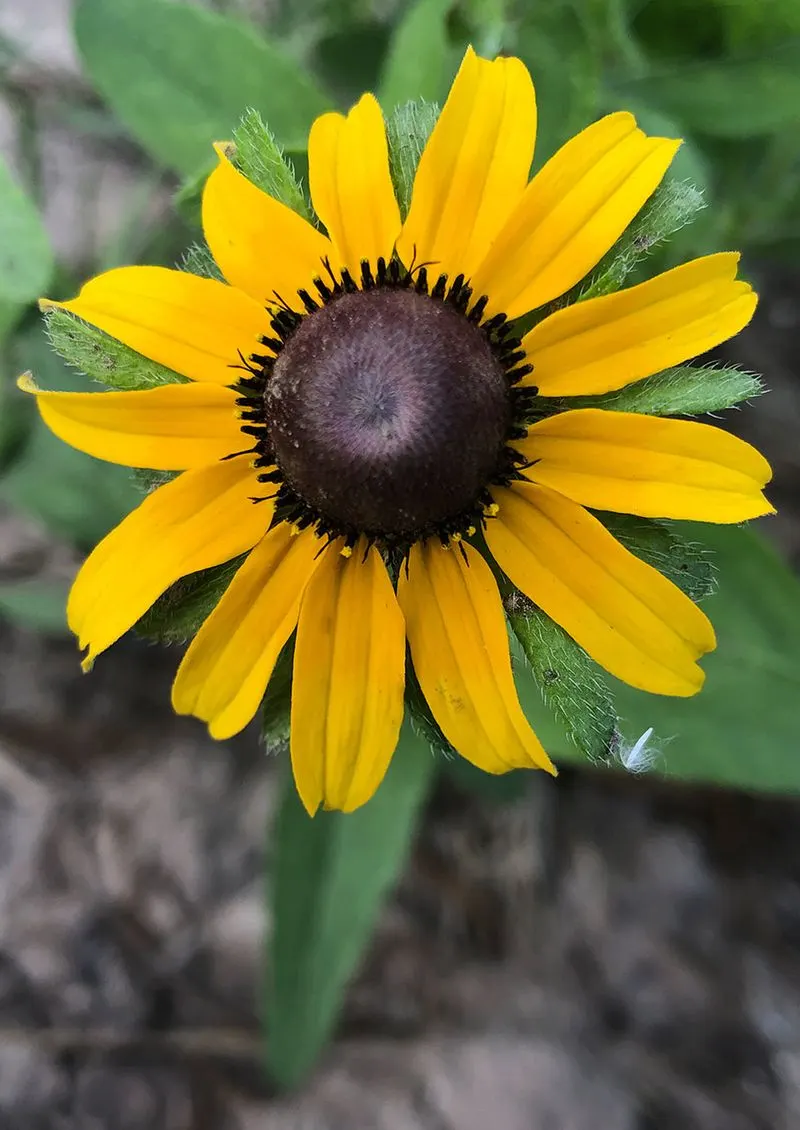
The sunny, golden blooms of Black-eyed Susans are a cheerful sight, and their seeds are a food source for birds like goldfinches. These resilient plants bring warmth and vibrancy to any garden setting.
Black-eyed Susans flourish in sunny spots and well-drained soil, requiring little water. They bloom from late summer into fall, ensuring a long-lasting display. In addition to attracting birds, they are also popular with pollinators like bees. They embody a delightful fusion of form and function.
Holly
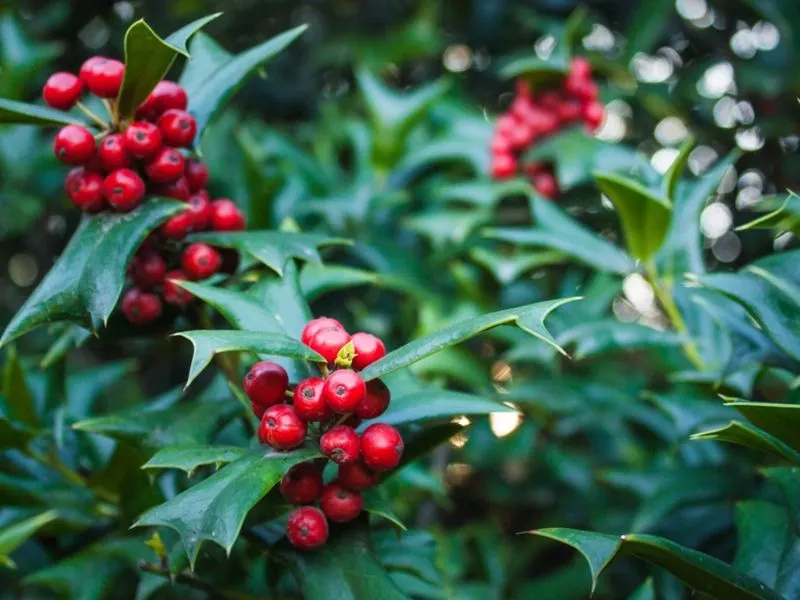
Holly bushes, with their glossy leaves and bright red berries, are a winter staple for many bird species. These berries provide much-needed sustenance in the colder months.
Besides their ecological role, hollies add year-round structure and color to a garden. They are relatively low-maintenance and thrive in various soil types. When planting hollies, consider their size and space accordingly, as they can grow quite tall. This classic plant supports birds while enhancing garden aesthetics.
Serviceberry
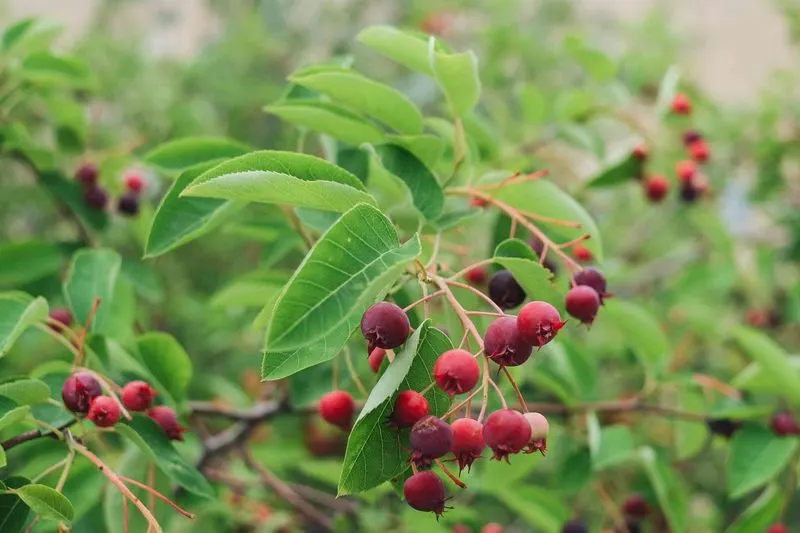
Serviceberries offer a progression of interest with beautiful white flowers in spring and edible berries in early summer. Birds, particularly cedar waxwings, are drawn to its berries.
The plant thrives in well-drained soil, preferring full sun to partial shade. Serviceberries can be grown as multi-stemmed shrubs or small trees, adding versatility to garden design. Their fall foliage is another bright feature, ensuring that they provide visual interest throughout the year.
Coneflower
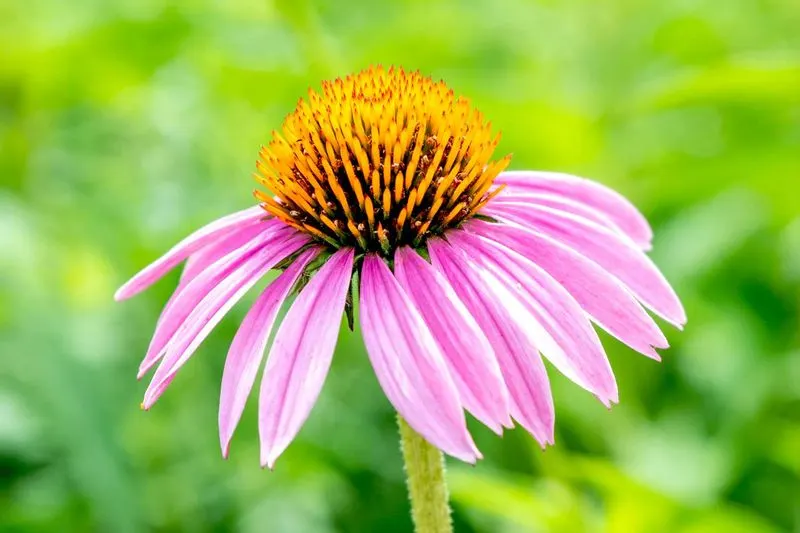
Recognizable by their daisy-like appearance, Coneflowers are not just pretty faces. Their seeds attract birds like sparrows and finches, adding life and movement to your garden.
These perennials are adaptable, tolerating drought and poor soil conditions. They flourish in full sun and can add a splash of color from midsummer to fall. Besides drawing birds, they also support pollinators like bees and butterflies, making them a multifunctional garden choice.
Sunflower
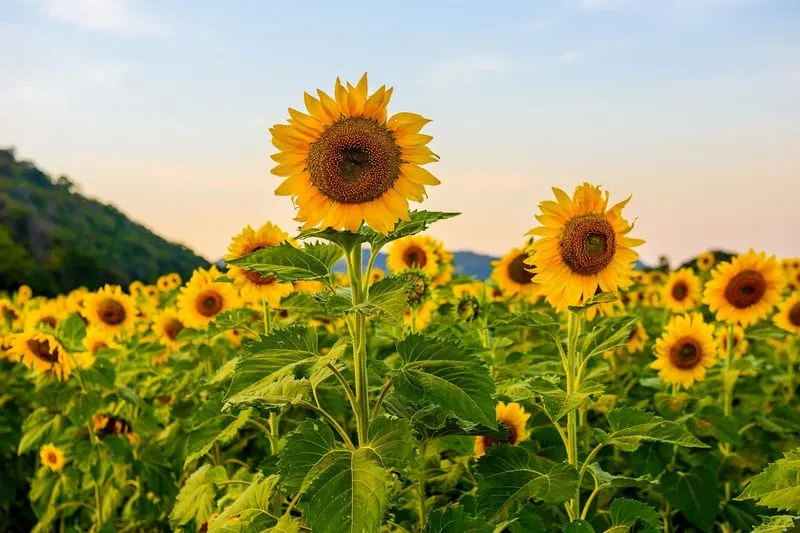
Sunflowers are synonymous with summer, their cheery faces standing tall and proud. Beyond their beauty, they provide seeds that attract a variety of birds, particularly finches.
These plants thrive in full sun and well-drained soil, often reaching impressive heights. Sunflowers can be annual or perennial, offering flexibility in garden planning. As they mature, their seeds become a natural bird feeder, supporting wildlife in a sustainable way.
Fuchsia
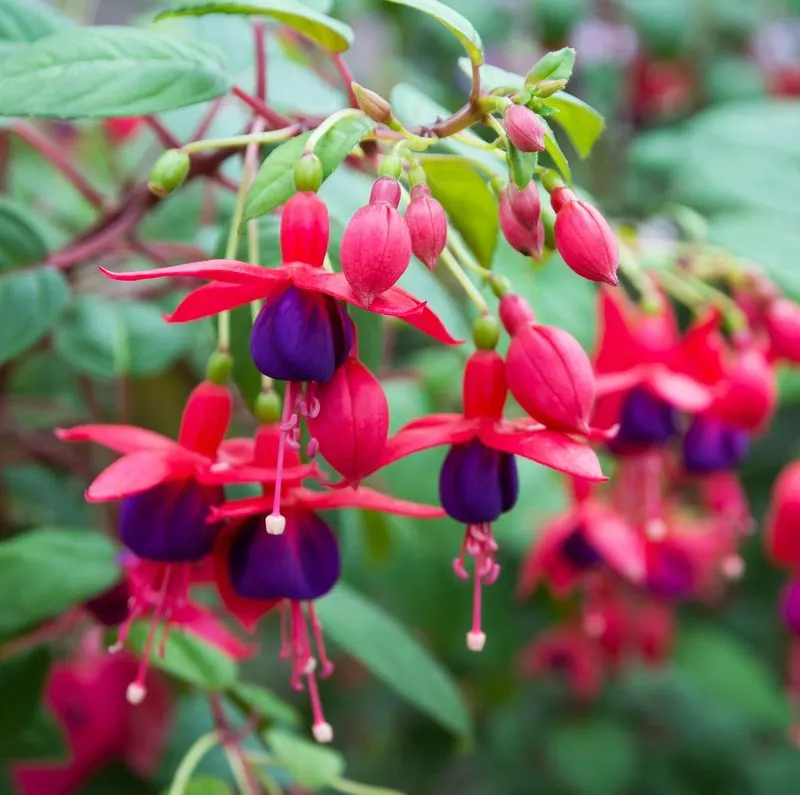
The pendulous blooms of Fuchsias are a favorite for hummingbirds, providing both nectar and vibrant color. These plants are ideal for shaded spots or hanging baskets.
Fuchsias prefer moist, well-drained soil and thrive in cooler climates. Regular deadheading encourages continuous blooming, keeping the garden lively with visiting birds. Their unique upside-down flowers add a whimsical touch to any garden setting, enhancing both form and function.
Lavender
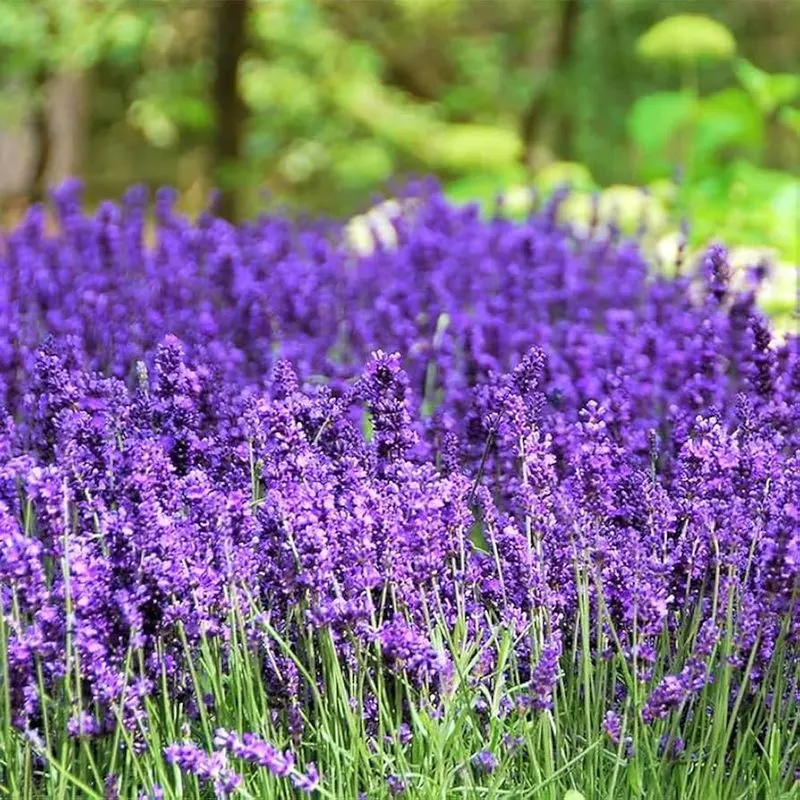
Lavender is not only aromatic but also a magnet for birds and pollinators. Its fragrant flowers attract a variety of species, adding a sensory dimension to the garden.
Thriving in well-drained soil and full sun, lavender is drought-resistant once established. The silvery foliage and purple blooms provide visual interest even when the flowers are not at their peak. Besides its appeal to birds, lavender is a beloved choice for its calming presence and versatility.
Marigold
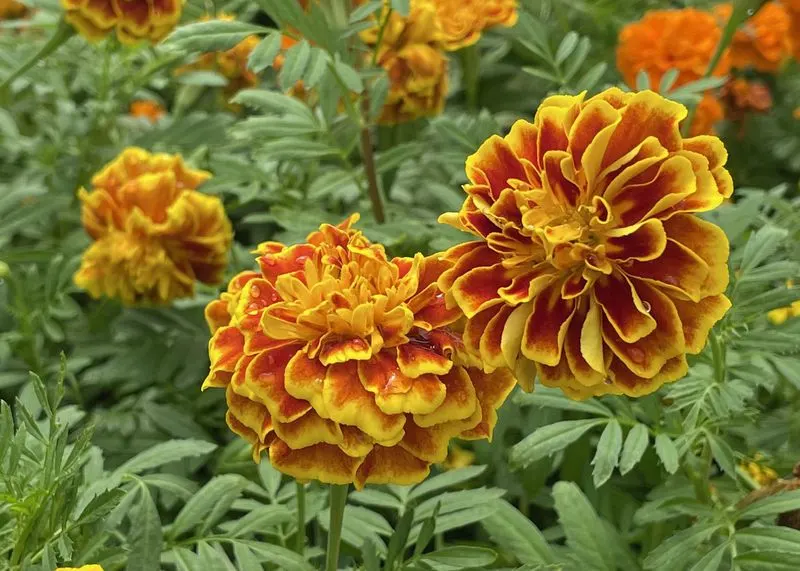
Marigolds, with their vibrant colors and easy-care nature, offer more than just aesthetic value. These flowers can attract birds that feed on insects, supporting a healthy garden ecosystem.
Ideal for sunny locations, marigolds thrive in well-drained soil and require minimal care. They bloom throughout the summer, maintaining a consistent pop of color. In addition to attracting birds, marigolds are known for their pest-repelling properties, making them a practical choice for gardeners.
Pine
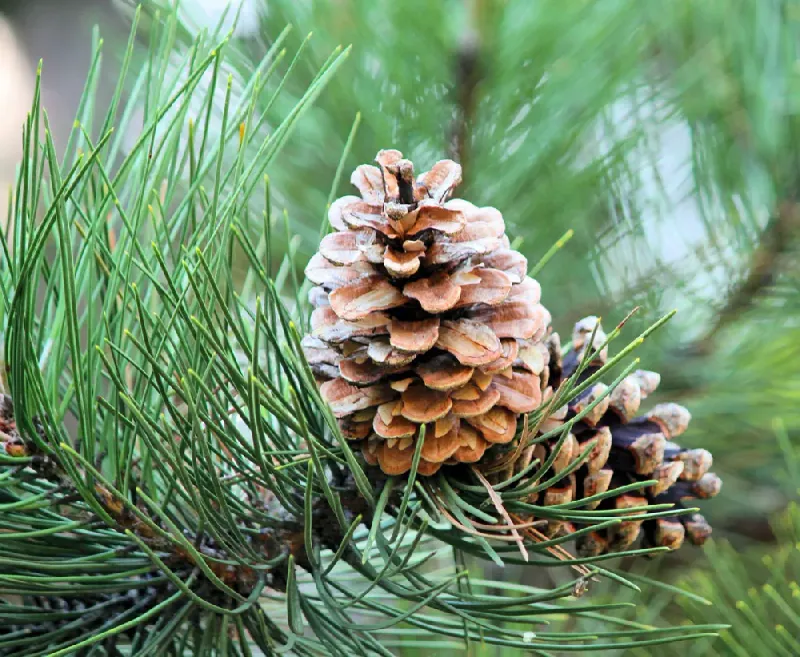
Pine trees, with their evergreen foliage and abundant cones, provide both food and shelter for birds. Woodpeckers and crossbills are particularly fond of pine seeds.
These trees are versatile, growing in various soil types and climates, making them a reliable choice for gardeners. Pine trees can also serve as windbreaks, offering protection to both plants and wildlife. Their towering presence adds architectural interest to landscapes while supporting local bird populations.
Bee Balm
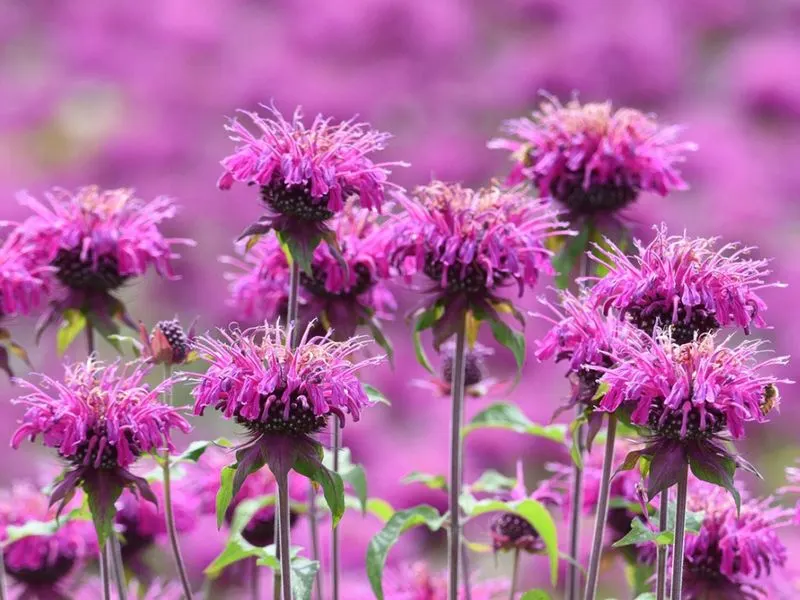
Bee Balm, known for its unique, tubular flowers, is a haven for hummingbirds. Its rich nectar is readily accessible, making it a staple in bird-friendly gardens.
These perennials thrive in full sun to partial shade and prefer moist, well-drained soil. Besides attracting birds, Bee Balm is admired for its aromatic foliage and vibrant colors. Regular pruning after flowering can encourage further blooms, ensuring a continuous source of nectar for visiting birds.
Trumpet Vine
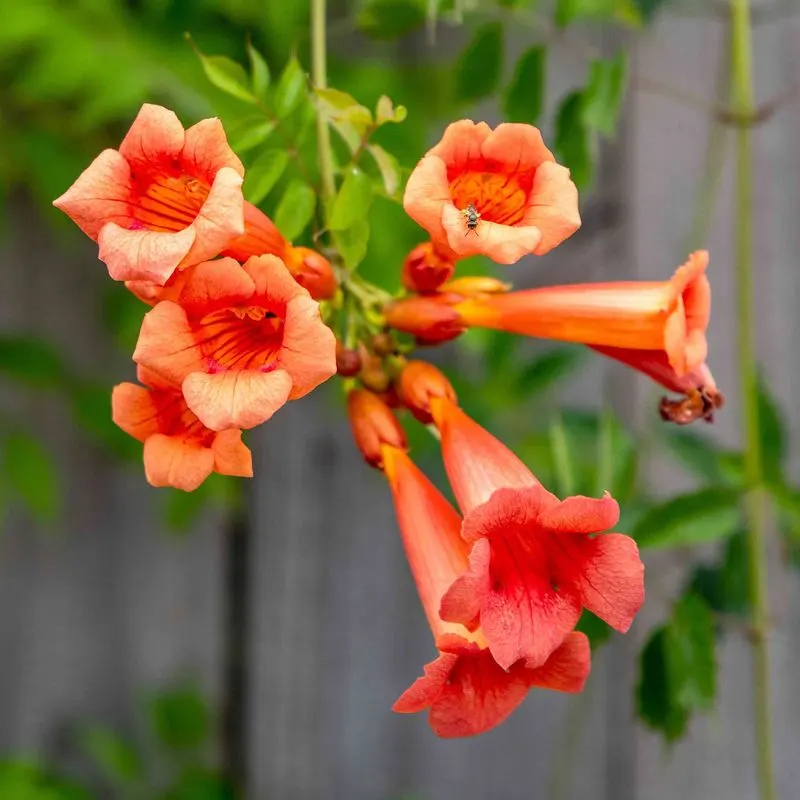
The vibrant, tubular flowers of the Trumpet Vine are a natural draw for hummingbirds. They provide a dramatic display of color and an abundant source of nectar.
Trumpet Vines thrive in full sun and well-drained soil, climbing structures with ease. They grow vigorously, so regular pruning is necessary to manage their size. In addition to their beauty, these vines offer an architectural element to garden spaces, enhancing both vertical and horizontal dimensions.
Oak
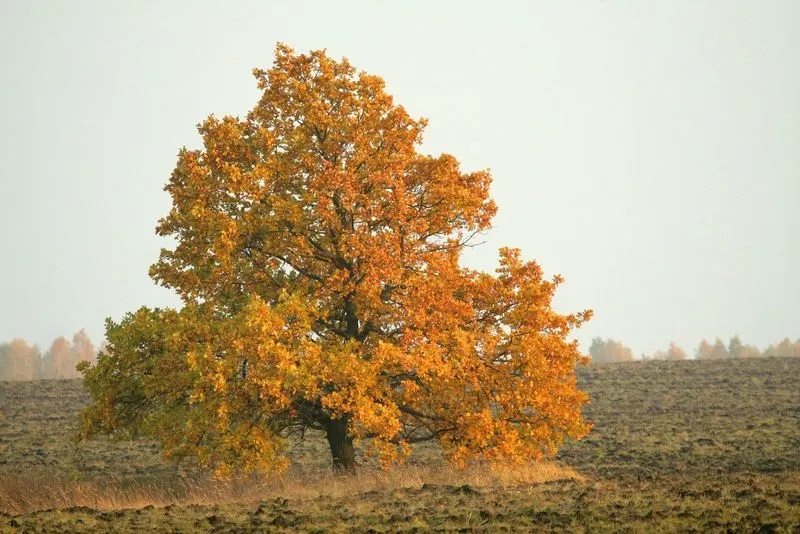
The mighty oak is more than just a symbol of strength; it is a keystone species in many ecosystems. Its acorns provide essential food for birds like jays and woodpeckers.
Oaks thrive in a variety of soil conditions and can live for centuries, offering long-term benefits to gardens and wildlife. They provide shade and contribute to the garden’s ecosystem with leaf litter that enriches the soil. Their majestic presence adds a timeless quality to any landscape.
Goldenrod
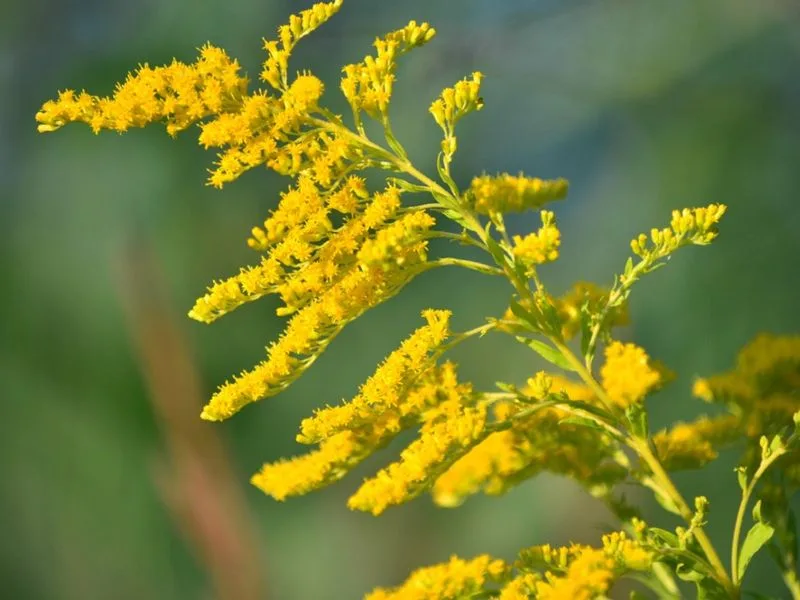
Goldenrod, often misunderstood as a weed, is a valuable addition to bird-friendly gardens. Its seeds are a source of food for many birds, and its bright yellow flowers add a splash of color.
These perennials are tough, thriving in a range of soil conditions and full sun. Goldenrod blooms in late summer to fall, extending the garden’s interest beyond the usual growing season. Besides attracting birds, it also supports pollinators like butterflies, making it a versatile choice for any garden.
Salvia
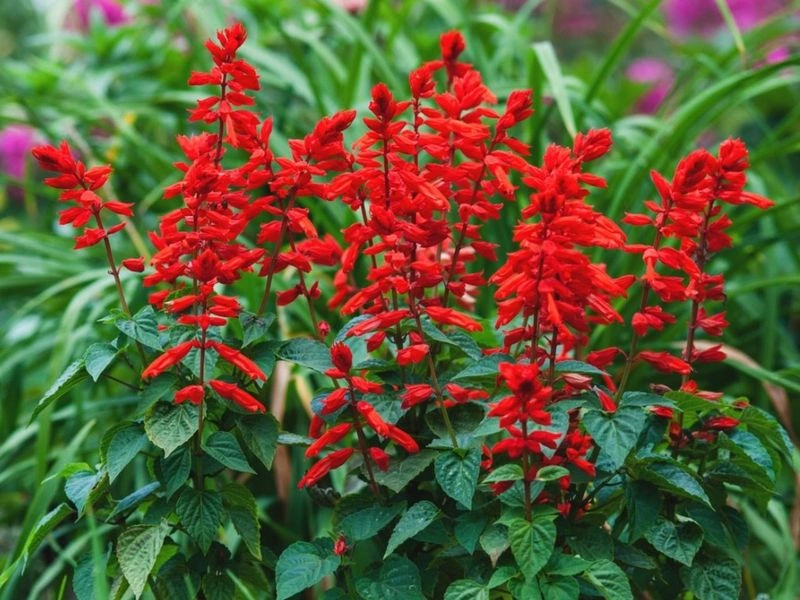
Salvia, with its spiky blooms, is a beacon for hummingbirds. The vibrant flowers offer nectar and visual appeal, creating a lively garden atmosphere.
These plants prefer full sun and well-drained soil, showing resilience in various climates. Salvia blooms from late spring to fall, providing long-lasting color and nourishment for birds. Regular deadheading encourages more flowers, ensuring that your garden remains a hotspot for bird activity throughout the season.
Joe-Pye Weed
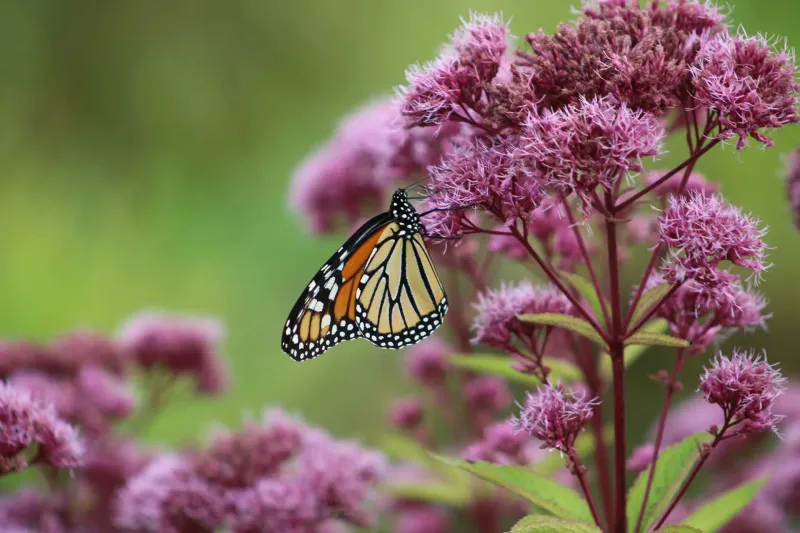
Joe-Pye Weed stands tall with clusters of mauve flowers, attracting both birds and butterflies. Its nectar-rich blooms are particularly popular with hummingbirds.
These plants thrive in moist, well-drained soil and full sun to partial shade. They can reach impressive heights, adding vertical interest to garden designs. Besides their beauty, Joe-Pye Weeds are hardy and easy to grow, supporting wildlife while requiring minimal attention from gardeners.
Honeysuckle
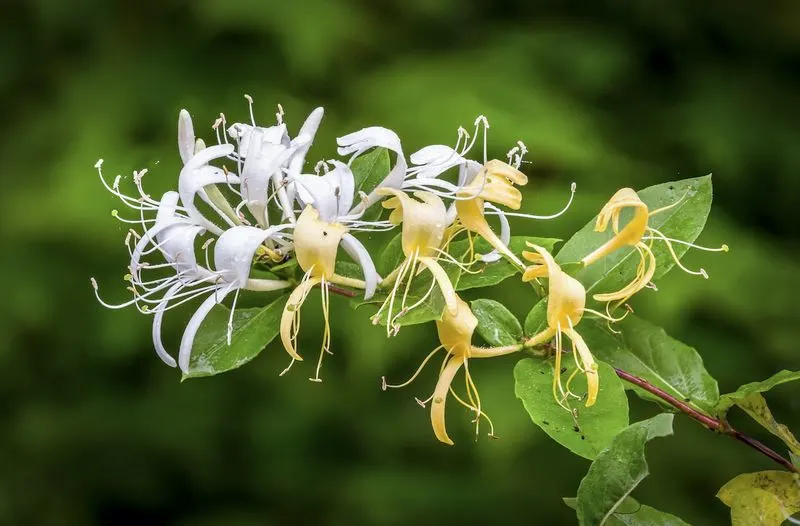
The sweet-smelling, tubular flowers of Honeysuckle are a favorite for hummingbirds, offering both nectar and fragrance. This versatile plant can be grown as a vine or shrub.
Honeysuckle thrives in full sun to partial shade, preferring well-drained soil. It grows vigorously, so occasional pruning is required to manage its spread. Beyond attracting birds, Honeysuckle adds a romantic touch to garden spaces with its fragrant blooms, enhancing sensory appeal.
Mulberry
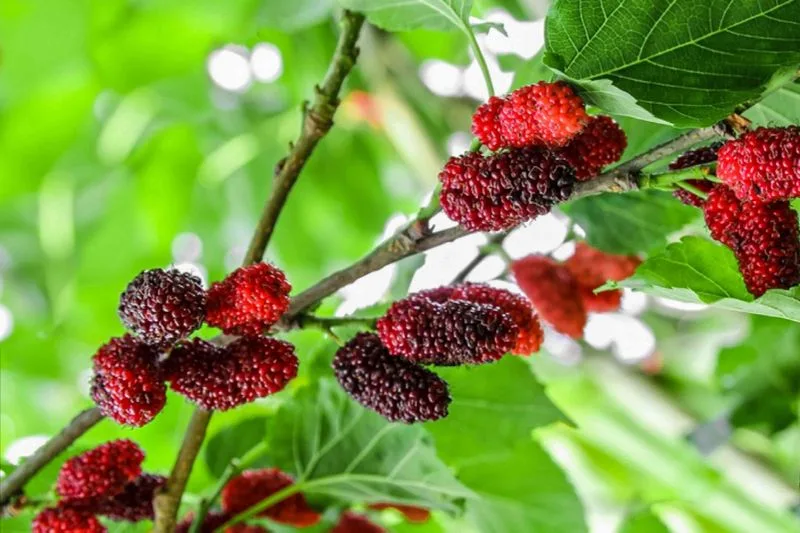
Mulberry trees are a feast for birds, offering an abundance of berries that songbirds find irresistible. Their fruiting period provides sustenance during crucial feeding times.
These trees prefer well-drained soil and full sun, and they can grow in various climates. Mulberries can reach considerable sizes, providing both shade and habitat for birds. Besides their practical benefits, they add a touch of rustic charm to garden landscapes.
Cherry Blossom
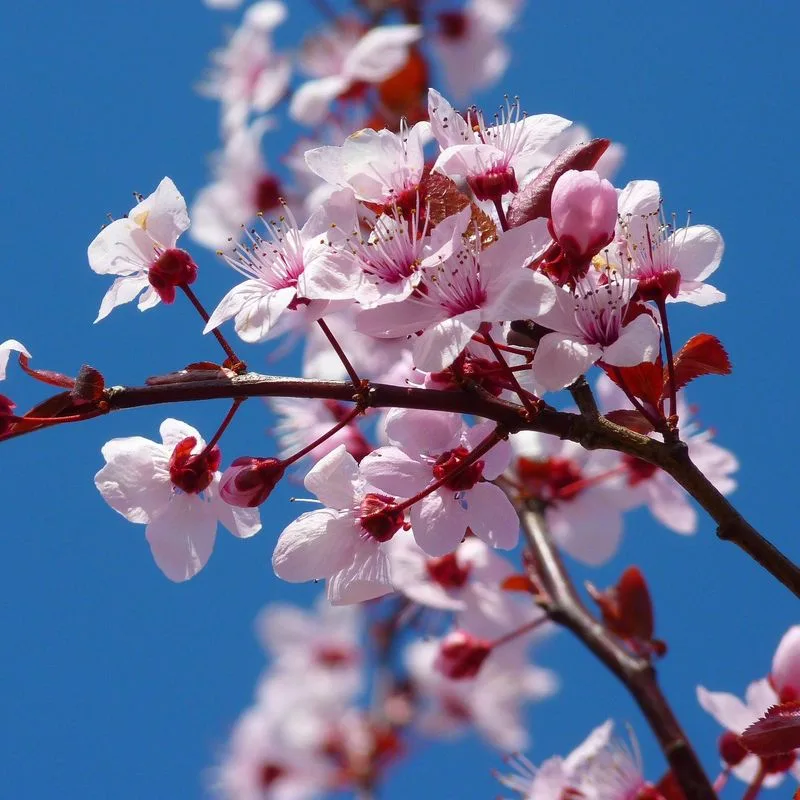
Cherry Blossom trees are renowned for their breathtaking spring displays, attracting birds with their vibrant blooms. Although the flowers are short-lived, they offer early-season nectar.
These trees prefer well-drained soil and full sun, thriving in temperate climates. Beyond their beauty, Cherry Blossoms can provide shade and habitat for birds. Their fleeting blooms herald the start of spring, making them a cherished addition to any garden.
Cotoneaster
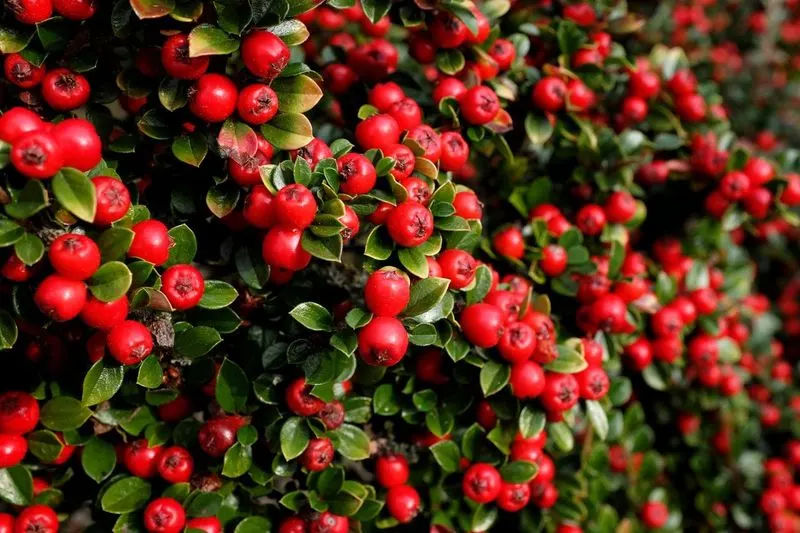
Cotoneaster shrubs are adorned with red berries that birds find irresistible. These berries provide essential food during autumn and winter.
These hardy plants thrive in full sun to partial shade and well-drained soil. Cotoneasters are low-maintenance, making them ideal for gardeners seeking ease of care. In addition to supporting wildlife, they offer colorful foliage changes throughout the seasons, enhancing garden aesthetics.
Huckleberry
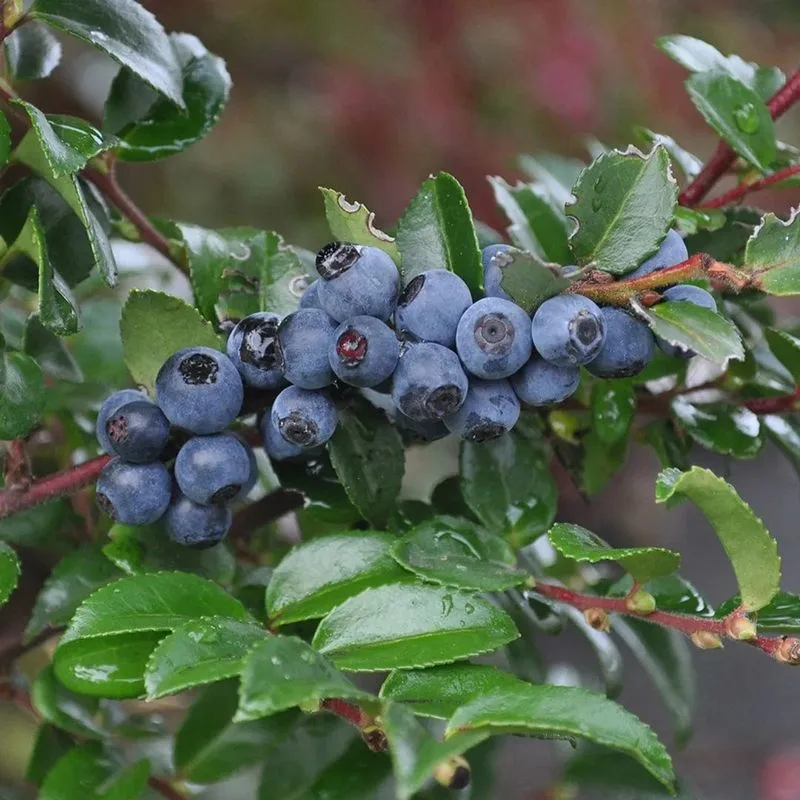
Huckleberry bushes are a delightful choice for attracting birds, offering berries that are both nutritious and enticing. Their fruiting period offers sustenance during late summer.
These shrubs are adaptable, thriving in full sun to partial shade and well-drained soil. Huckleberries can be grown in a variety of climates, ensuring versatility for gardeners. Beyond their ecological benefits, they add seasonal color and texture to garden designs.
Raspberry
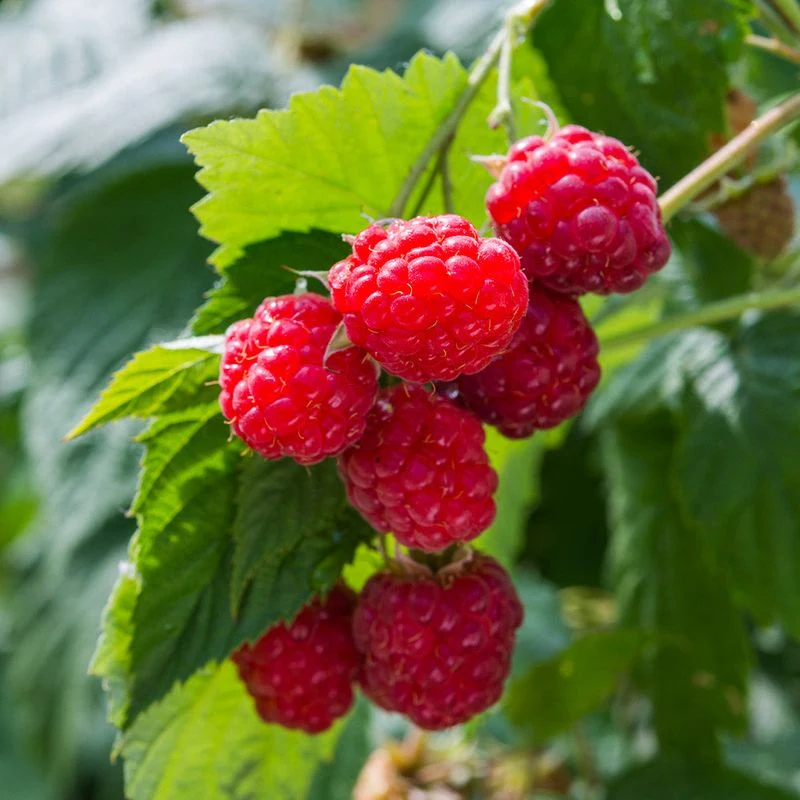
Raspberry bushes offer a bounty of berries that birds relish, adding both flavor and color to gardens. Their fruiting season provides extended nourishment through the warmer months.
Thriving in well-drained soil and full sun, raspberries are relatively easy to grow and manage. Regular pruning ensures bountiful harvests and healthy plants. Besides attracting wildlife, they contribute to the garden’s bounty with edible fruits for human enjoyment.
Viburnum
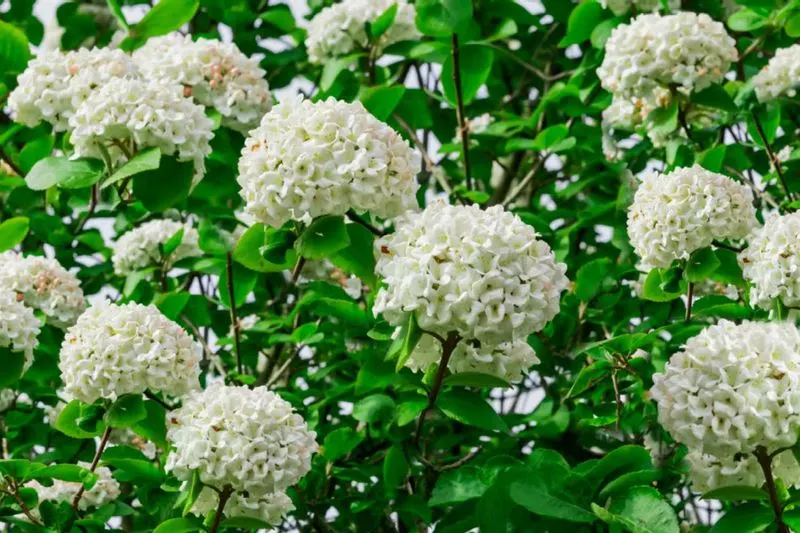
Viburnum shrubs offer year-round interest with fragrant blooms and berries that attract birds. Their flowers transform into berries, offering sustenance late into the season.
These plants thrive in full sun to partial shade, preferring well-drained soil. Viburnums vary in size and shape, providing flexibility in garden design. Besides their ecological role, they enhance landscapes with seasonal changes in foliage and flowers.
Crabapple
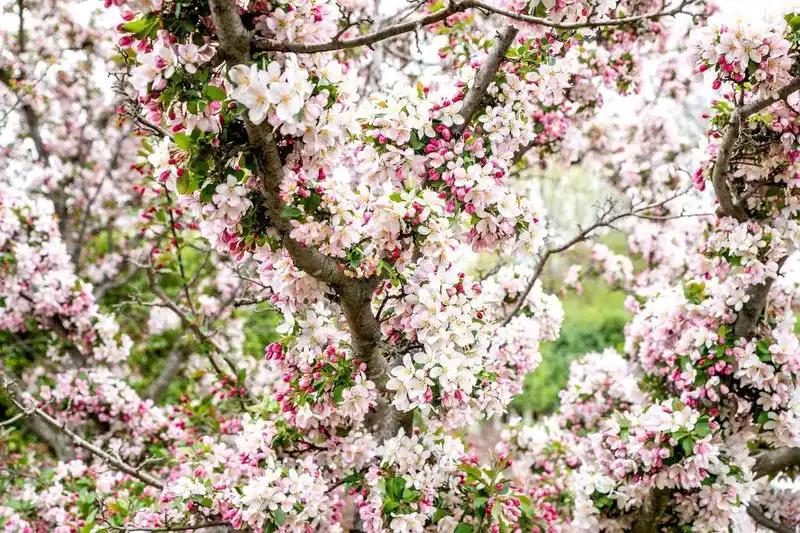
Crabapple trees are an inviting choice for birds, offering small fruits that persist into winter. These fruits provide a vital food source when other options are scarce.
Thriving in well-drained soil and full sun, crabapples are adaptable and resilient. They add seasonal beauty with spring blooms and autumn foliage. In addition to supporting birdlife, they enhance garden aesthetics with their ornamental appeal.
Snowberry
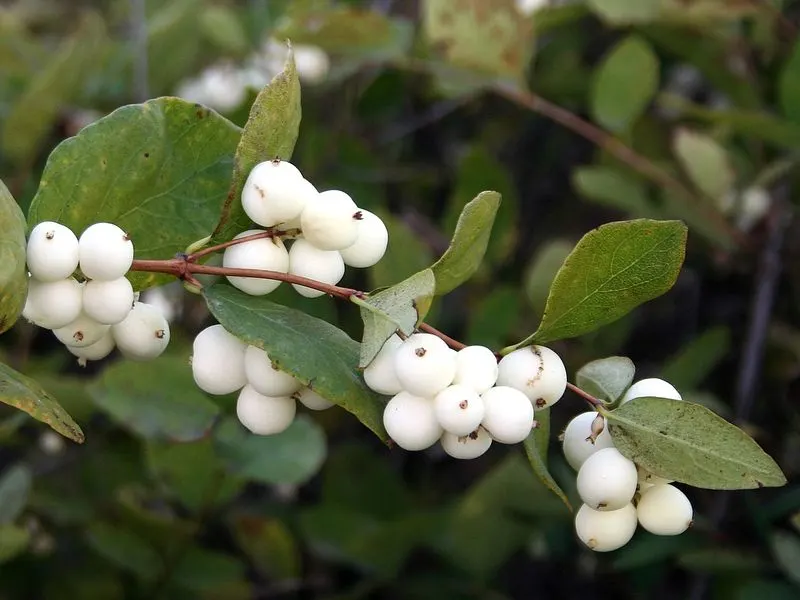
Snowberry bushes are known for their distinctive white berries, providing a unique food source for birds in winter. These berries add visual interest when other plants are dormant.
Their hardiness makes them easy to grow in full sun to partial shade and well-drained soil. Snowberries are low-maintenance, ideal for gardeners seeking a blend of beauty and functionality. Beyond supporting wildlife, they offer year-round interest with their striking berry displays.
Dwarf Dogwood
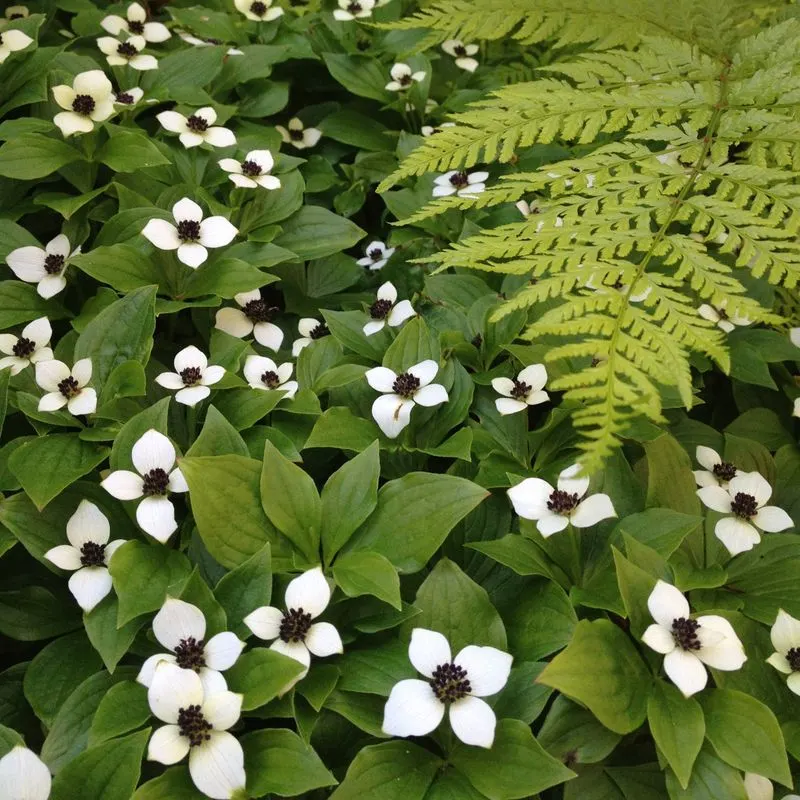
Dwarf Dogwood, with its intriguing red stems and white flowers, is a lesser-known gem for attracting birds. Its berries provide essential nourishment during late summer.
These shrubs thrive in full sun to partial shade, preferring moist, well-drained soil. Their compact size makes them suitable for smaller gardens or as part of larger landscapes. Besides their ecological benefits, they offer visual interest with seasonal changes in stem and foliage color.
Winterberry
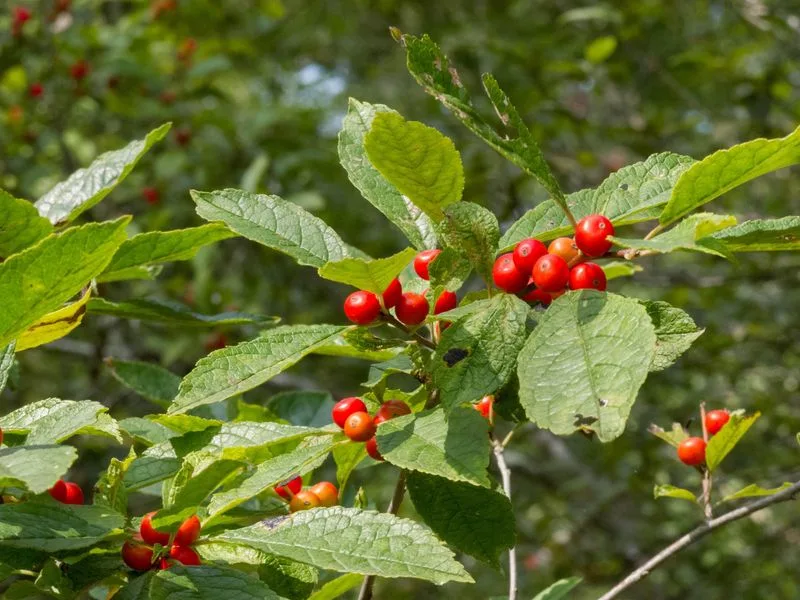
Winterberries are a vibrant choice for winter gardens, offering bright red berries that persist through the cold months. These berries are a crucial food source for birds when other options are limited.
Thriving in full sun to partial shade, winterberries prefer acidic, well-drained soil. They are dioecious, requiring both male and female plants for fruit production. Beyond their practical benefits, they add a pop of color to winter landscapes, enhancing garden beauty.

